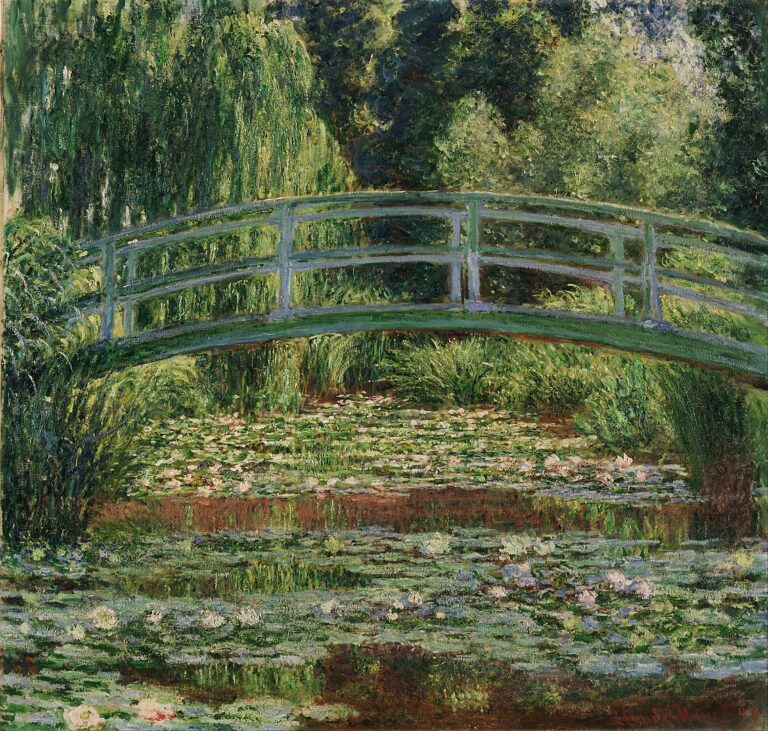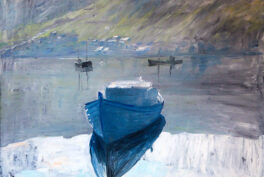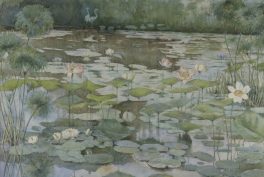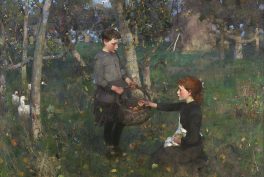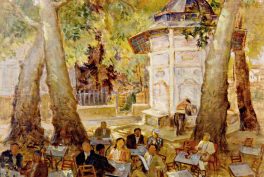Claude Monet in 1924 wrote:
“It took me a long time to understand my water lilies…. I grew them without thinking of painting them…. And then, all of a sudden, I had the revelation of the enchantment of my pond. I took up my palette.”
All those lilies, water and the famous footbridge are the synonym of Impressionism. Impressionism, which for Monet, in 1920s turned into something much more – something between expressionism and abstraction. Just look at our painting of the week:
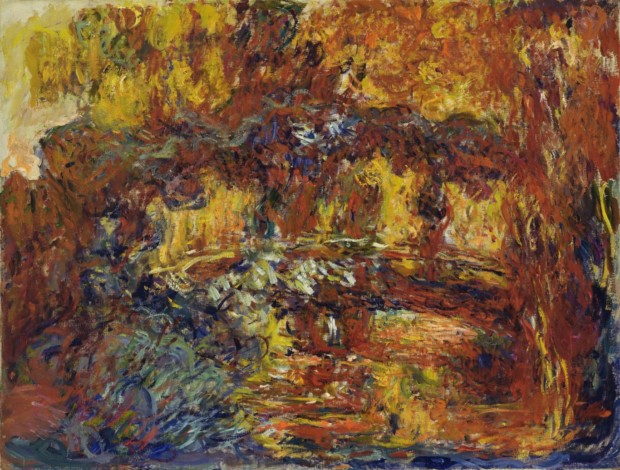
The Japanese Footbridge is among Monet’s last paintings of this subject, made between 1920 and 1922. While the paintings in the earlier series are more naturalistic in style, the later works feature dense swirls and loose strokes of color that almost obscure the form of the bridge. These later paintings also feature a fiery palette of maroons, rusts, and oranges unique within Monet’s body of work.
All because Monet’s eyesight started to fail him.
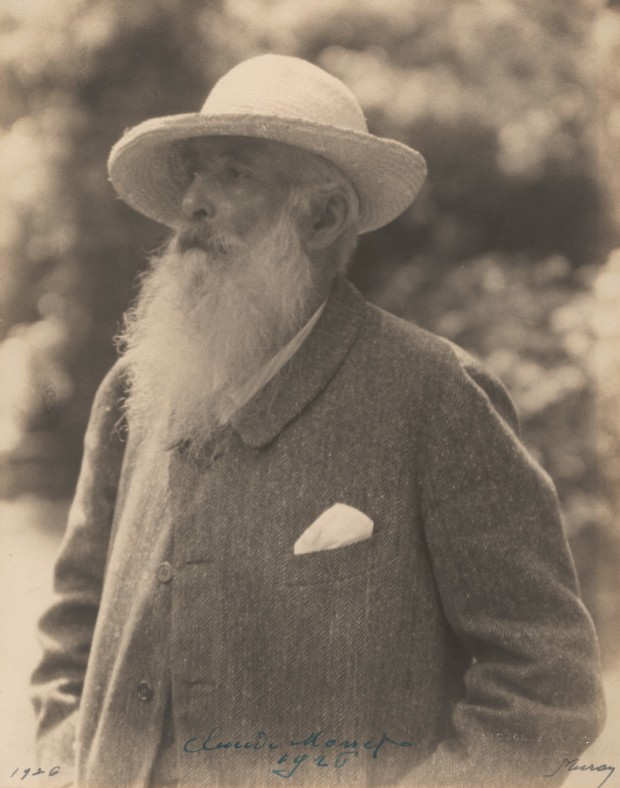
In 1899, Monet painted 12 works from a single vantage point, focusing on the arching blue–green bridge and the microcosm of his water garden.
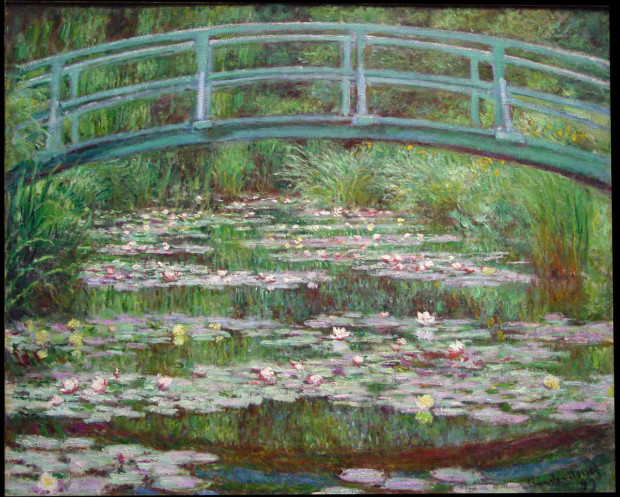
When Monet exhibited these paintings at Durand–Ruel’s gallery in 1890, a number of critics mentioned his debt to Japanese art. The critics also saw the inspiration taken from the hortus conclusus (closed garden) of medieval images, while also evoking a dreamlike contemplative zone consonant with symbolist literature, especially poems such as “Le Nénuphar blanc” by Stéphane Mallarmé.
Find out more:
[easyazon_image align=”none” height=”160″ identifier=”2353402178″ locale=”US” src=”https://www.dailyartmagazine.com/wp-content/uploads/2017/09/61QH3ktR7eL.SL160.jpg” tag=”dailyartdaily-20″ width=”112″] [easyazon_image align=”none” height=”160″ identifier=”1419709607″ locale=”US” src=”https://www.dailyartmagazine.com/wp-content/uploads/2017/09/61TWq9y0StL.SL160.jpg” tag=”dailyartdaily-20″ width=”125″] [easyazon_image align=”none” height=”160″ identifier=”2080203061″ locale=”US” src=”https://www.dailyartmagazine.com/wp-content/uploads/2017/09/61VKHXR4XyL.SL160.jpg” tag=”dailyartdaily-20″ width=”101″]
